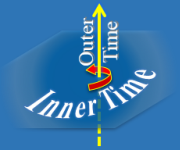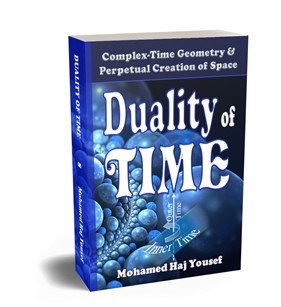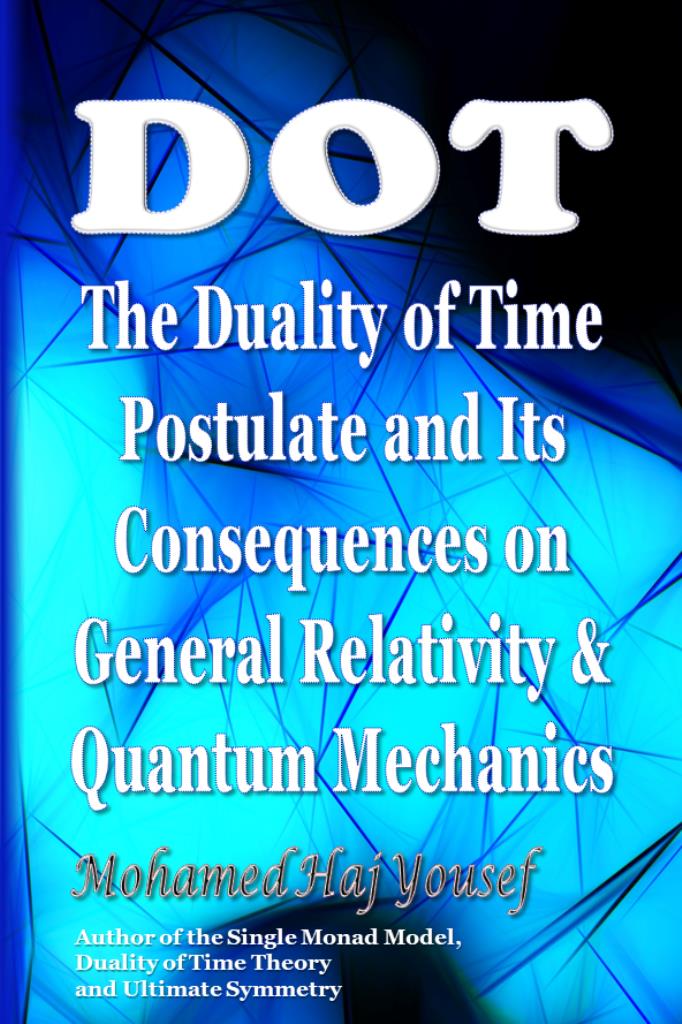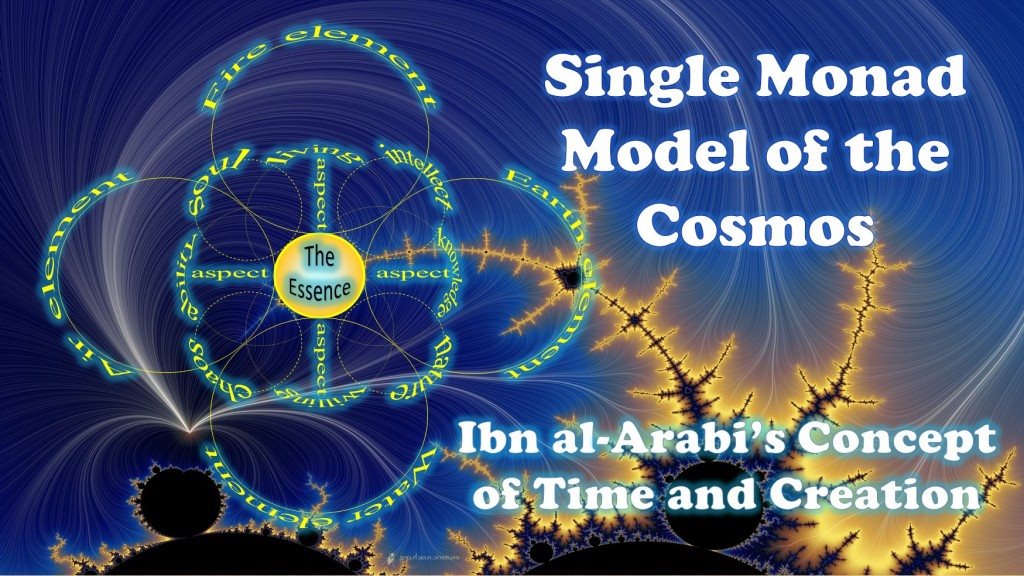II.1 Symmetry and Quantum Mechanics
The concept of symmetry and conservation laws are
extraordinarily useful in Quantum Mechanics and the Standard Model of
Elementary Particles, mainly when verbalized via Group Theory and Lie algebra,
which play essential roles in the mathematical formulation of Quantum Field
theories. The forms of the fundamental quantum operators, such as energy, as a
partial time derivative, and momentum, as a spatial gradient, become very clear
by considering the initial state and then slightly changing some parameters,
such as displacements, durations or angles. Additionally, the invariance of
certain quantities can be seen by making such changes, which illustrate their
conservation.
For example, elementary particles have internal symmetry
defined by the baryon number, which is one of the essential properties of
hadrons, which are made of three quarks. The baryon number of hadrons is . On
the other hand, when this number is , this
describes particles such as bosons, leptons or mesons, which are made of one
quark and one anti-quark. Because the baryon number is conserved during nuclear
interactions, symmetry implies that there must exist another class of particles
with a baryon number of , which
are the hadrons of antimatter. Other famous symmetries include the conservation
of charge, parity and time reversal. Physicists were astonished when it was
demonstrated that parity is maximally violated in some weak interactions, and
it is still not understood yet why this is the case, or why certain other
symmetries, such as and are
only slightly violated, as will be discussed in section II.2.
After the evident success of Quantum Mechanics in 1920s,
Quantum Field Theory tried to combine classical fields with Special Relativity
and Quantum Mechanics in one theoretical framework for constructing quantum
mechanical models of subatomic particles, as well as quasi-particles in
condensed matter physics. Because it is based on Special Relativity, the
Poincar group is the basic symmetry of Quantum Field Theory. This means that
the laws of relativity cannot be reduced, but they can be extended by other symmetries,
which can be deduced from experimental results. The Standard Model, as the
current accepted description of subatomic quantum physics, was found in this
manner.
In classical physics, a field is a quantity, represented by
a number or tensor, that has a value for each point in space and time, but in
the quantum theory of fields, a field occupies space, contains energy, and its
presence precludes a classical true vacuum. This led physicists to consider
electromagnetic and some other fields to be a physical entity. In the
beginning, since it was able to combine Special Relativity with Quantum
Mechanics, Quantum Field Theory was thought to be fundamental, but due to its
continued failures in quantizing General Relativity, it is only a very good
effective field theory, to some yet undiscovered more fundamental one. When
developed further, the theory often contradicts observation, but its creation
and annihilation operators can be empirically tied down, or re-normalized. The
essence of the problem is that it is impossible to quantize space-time itself
without supposing some background geometry or topology in which it is
quantized. In this regard, the Duality of Time Theory seems to be the only way
out of this riddle, because it produces a dynamic and self-contained
space-time, without any presupposed background. This will be even extremely
easier than all current approaches, such as Strings Theory and Loop Quantum
Gravity, because the resulting genuinely-complex time-time geometry is
originally Euclidean, and continuous, but it becomes intrinsically granular and
hyperbolic when its perfect symmetry is broken into the two orthogonal arrows
of time, as we introduced Chapter I.
In Quantum Field Theory, particles are the field quanta, or
excited states, of the underlying fields, and the interactions among these
particles are described by interaction terms among the corresponding underlying
quantum fields. Each one of the four fundamental interactions, or forces, is
associated with a field with is responsible for some type of particles, so for
example: electrons and photons are the quanta of the electromagnetic field, and
the graviton is the quanta of the gravitational field. These interactions are
conveniently visualized by Feynman diagrams. The main difference between
Quantum Mechanics and Quantum Field Theory is that the latter allows for the
creation and annihilation of particles, so it is capable of explaining how
matter is being created, rather than just describing the outward interactions
between objects and particles.
In early 1930s, Eugene Wigner (1902-1995) and Hermann Weyl
(1885-1955) were the first to apply the theory of group representations to
Quantum Mechanics. They recognized that this would allow solving problems in
atomic spectroscopy very easily, as well as addressing other foundational
questions, which eventually lead to the new formulation of Quantum Mechanics.
However, at the beginning, the introduction of Group Theory
to Quantum Mechanics was not universally welcomed, because it did not seem to
be necessary, since anything that can be done by Group Theory can be done
without it. However, soon it became clear that Group Theory is like a map that
is capable of showing the whole picture and giving more information with very
little input. Wigner writes in the preface to the 1959 English edition of hisGroup
Theory and Its Application to the Quantum Mechanics of Atomic Spectra:
When the original German version
was first published, in 1931, there was a great reluctance among physicists
toward accepting group theoretical arguments and the group theoretical point of
view. It pleases the author that this reluctance has virtually vanished and
that, in fact, the younger generation does not understand the causes and basis
for this reluctance. Of the older generation it was probably M. von Laue who
first recognized the significance of Group Theory as the natural tool with
which to obtain a first orientation in problems of Quantum Mechanics [34].
In accordance with Group Theory, Quantum Mechanics showed
that, unlike the macroscopic world which is characterized by various
approximate symmetries, the symmetry of elementary particles is exact, because
for example electrons are identical. Quantum systems are also described by
functions that are subject to the usual symmetry operations, such as rotation
and reflection, as well as other symmetrical properties that are manifested in
more esoteric spaces. In all these fields, symmetry can be expressed by certain
operations covered by groups and their representations, where symmetry matrices
are acting on the members of a vector space, which then can be classified
according to their symmetry. All the observed spectroscopic states of atoms and
molecules correspond to such symmetrical functions, which give the selection
rules that specify which transitions are observed. Spectroscopic
classifications are essentially identifications of the irreducible
representation to which the state belongs.


















